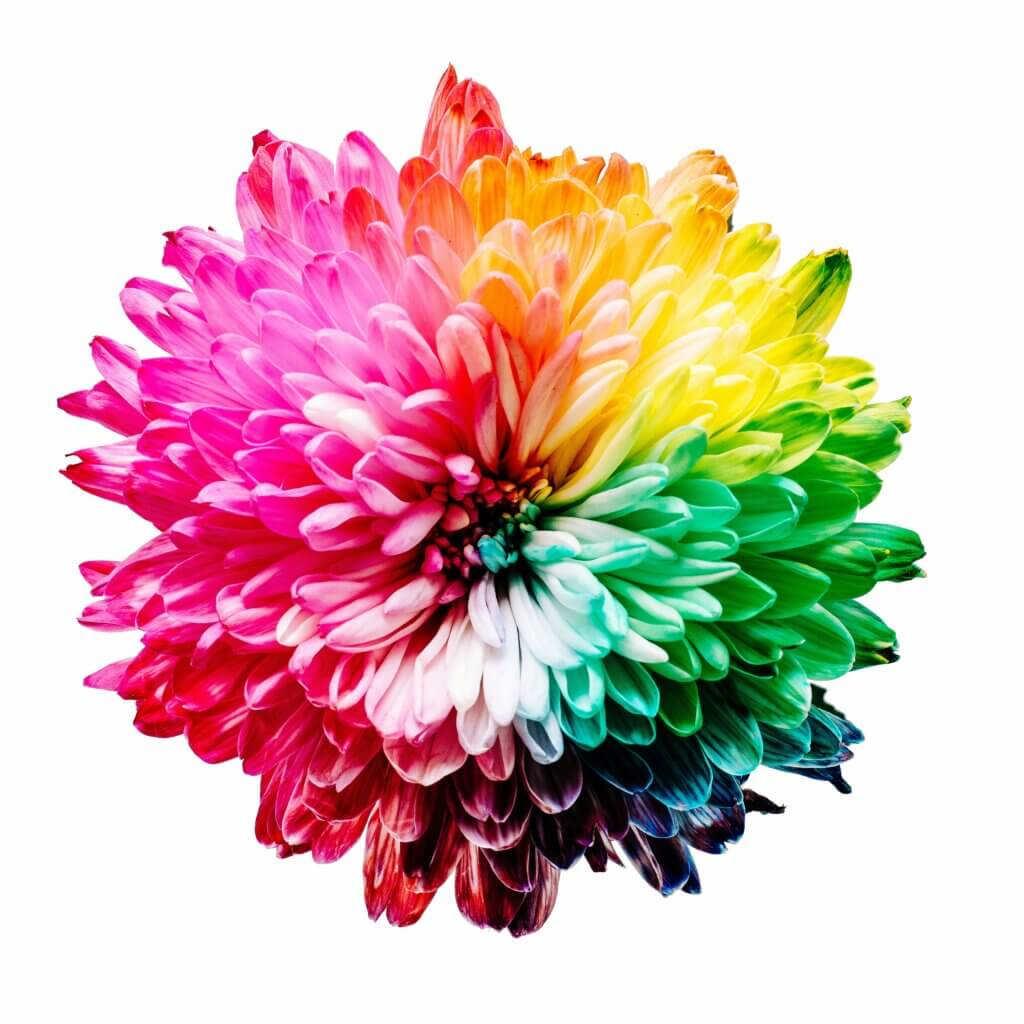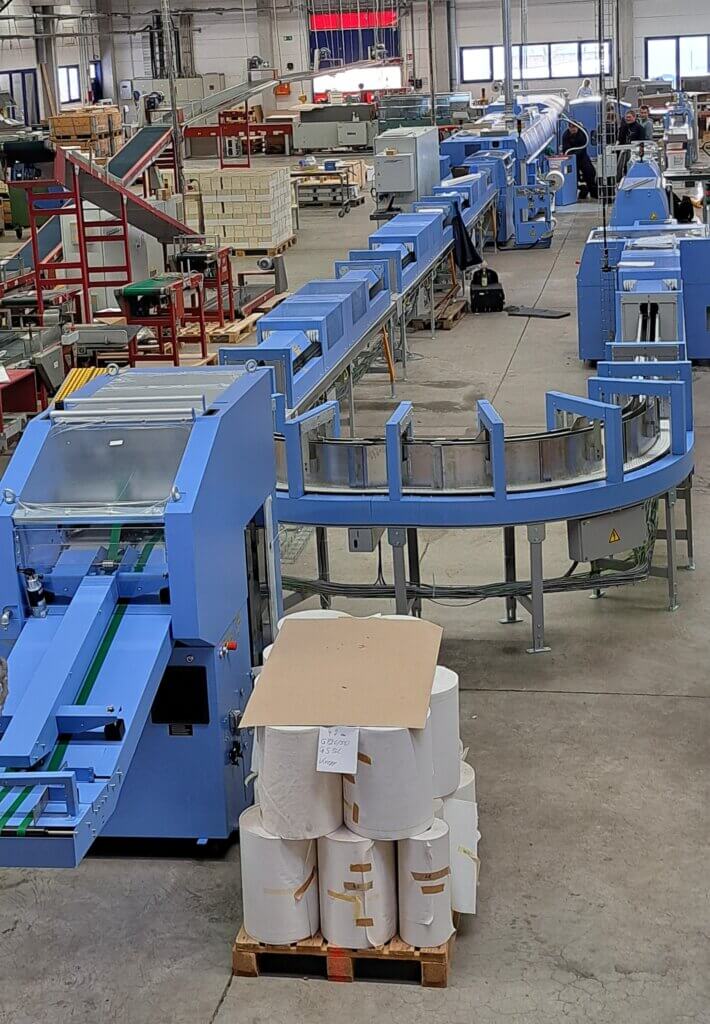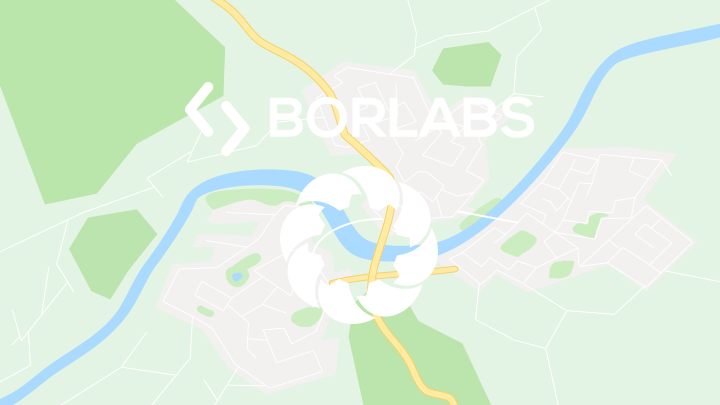Colors bring print products to life – but to ensure that they really appear on paper as they do on screen, one thing is needed above all: reliable color management. The ISOCoatedV2 color profile plays a key role in professional printing in particular.
This ICC profile has established itself as the standard in the European printing industry over the years. It ensures that colors are reproduced consistently, precisely and reliably – regardless of the device on which they are created or the print shop in which they are ultimately printed.
ISOCoatedV2 has become indispensable, especially in offset printing on coated image printing paper, both matt and glossy. However, there is also a special variant for time-critical productions: ISOCoatedV2 300 %, in which the ink application is reduced to enable faster drying times.
In this article, we explain what is behind the ICC profile, how it is used, which variants are available – and what the further development of FOGRA51 means for the future.
Would you like to ensure that your print data is implemented optimally in terms of color? We will be happy to advise you on suitable color management.
The contents at a glance
What is ISOCoatedV2?
Meaning and area of application
ISOCoatedV2 is an ICC color profile that has established itself as the standard in the European printing industry. It was developed for offset printing on coated image printing paper – i.e. on both glossy and matt paper. The name “ISOCoated” stands for the ISO standard for coated paper, while “V2” refers to the second version of the profile.

In practice, ISOCoatedV2 ensures standardized, reliable colour reproduction. Designers, prepress and printers use this profile to ensure that colors remain consistent from digital design to final print. Whether brochures, books or magazines: when offset printing on coated paper, ISOCoatedV2 is usually the recommended profile.
The advantage lies in its widespread use: many print shops use this color profile as a prerequisite for supplied print data, which ensures compatibility and color accuracy. The use of this profile is now standard, especially for technically demanding projects or larger print runs.
The connection with offset printing
ISOCoatedV2 was specially developed for the offset printing process – one of the most widely used printing processes in the world. Offset printing is characterized by high print quality, razor-sharp images and economical production for medium to large print runs. A precise color profile is required to ensure that all these advantages are also reflected in color – and this is precisely where ISOCoatedV2 comes in.
The profile takes into account the typical properties of coated art paper: smooth surface, high detail reproduction and relatively low absorbency. As a result, the print results are particularly color-intensive and rich in contrast. At the same time, the profile helps to avoid unwanted color deviations, especially in complex layouts with many image and color areas.
In the printing process itself, ISOCoatedV2 controls the color values so that they are optimally matched to the machine calibration and the paper. This creates security for everyone involved – from graphic design to prepress to production. Precisely because offset printing is so widespread, ISOCoatedV2 is also highly relevant in the daily practice of prepress.
💡 Would you like to find out more about offset printing? Read our blog article Long-proven and highly efficient – offset printing will still be modern in 2023
ISOCoatedV2 vs. ISOCoatedV2 300 %
Differences in paint application
In addition to the classic ISOCoatedV2 profile, there is also a variant called ISOCoatedV2 300%. The difference lies in the maximum permitted ink coverage – i.e. the sum of the percentage values of the four CMYK colors (cyan, magenta, yellow, black) on one dot of the paper. With classic ISOCoatedV2, this value is up to 330 %, with ISOCoatedV2 300 % it is limited to 300 %.
This limitation has a practical background: a lower ink application means that the paper dries faster. This is a decisive advantage, especially for online print shops that work with tight time windows and need to ensure rapid further processing.
Despite this reduction, the color effect remains almost the same in most applications – especially on coated paper, where differences are difficult to make out visually. The 300 % variant is therefore an optimized version of the original, specially adapted to modern production processes with high demands on efficiency and speed.
Why the 300% variant is important for online print shops
In online printing, one thing counts above all: speed with consistent quality. Customers expect fast delivery times and print shops need to align their processes accordingly. The ISOCoatedV2 300 % variant was developed precisely for this purpose – it enables print products to be processed more quickly as there is less ink on the paper and drying times are therefore reduced.
The risk of rubbing off is also reduced, which plays an important role in automated cutting, folding or binding. Print results remain stable and professional despite the lower ink application – a clean solution for fast-paced everyday production.
This is why many online print shops now use ISOCoatedV2 300% as the standard profile for their productions. It is important for designers to consider this profile early on in the layout process to avoid any surprises in the color result later on. Communication between designers and printers should always clearly define which profile is to be used – especially if time and quality are equally important.
Technical background: FOGRA39 and standardization
Characterization data and tone value increase
The ISOCoatedV2 colour profile is based on the FOGRA39 characterization file, which was developed by the Forschungsgesellschaft Druck e.V. (Fogra). This file contains standardized measured values for colour reproduction on coated image printing paper in offset printing. The aim is to make the dot gain, i.e. the ink application during transfer from digital design to paper, as precisely predictable as possible.
Dot gain describes the extent to which halftone dots are larger in the actual printing process than they are digitally created. This can significantly influence the color impression – especially with fine color gradients or shades of grey. The FOGRA39 data takes these effects into account and makes it possible to calibrate printing systems accordingly.
Two tone value curves are generally used for ISO Coated V2: one for the three CMY color separations and a slightly different one for black. This enables a particularly harmonious and uniform print image to be produced – regardless of the printing press or location.
Use in common design programs
ISOCoatedV2 is not only widely used in print production, but can also be used in common design programs. Programs such as Adobe InDesign, Photoshop or Illustrator are designed for the US standards. However, German profiles such as PSO, ISO or FOGRA can be downloaded and installed via ECI.org.
Ideally, the correct profile is selected when the print data is created – this allows an early assessment of how colors will behave in the subsequent print. In conjunction with a calibrated monitor and a soft proof, colour deviations can be significantly minimized.
For designers, this means that anyone working with ISOCoatedV2 is adhering to an industry-wide recognized standard that supports consistent implementation from the screen to the end product. Especially when working with print shops, this creates clarity, prevents misunderstandings and ensures smooth processes.
Development and future: From ISOCoatedV2 to FOGRA51
Why further development was necessary
Even though ISO Coated V2 is still widely used in the printing industry, the demands on color management and print quality have increased over time. New types of paper, changes to printing presses and, above all, the increasing use of optical brighteners in papers meant that the previous profile was no longer able to deliver precise results in all cases.
A new characterization profile has been developed to take account of these changes: FOGRA51. This profile depicts modern printing conditions more realistically and was introduced as part of the PSO Coated v3 standard. The aim is to guarantee reliable color reproduction even with changed materials – and at an even higher quality level.
New standards and their significance
FOGRA51 is in the starting blocks as the next generation and is set to replace ISOCoatedV2 as the standard in the medium term. However, this does not mean that ISOCoatedV2 will disappear overnight – many print shops continue to work successfully with it, partly because the changeover involves technical and organizational effort.
Nevertheless, it makes sense to familiarize yourself with FOGRA51 now – especially for agencies and print service providers who want to work to the latest standards. Using the right profile is therefore not only a question of accuracy, but also a question of future-proofing print production.
Conclusion: ISOCoatedV2 in modern color management
Why the profile is still relevant
Even though a more modern alternative is already available in the form of FOGRA51, ISOCoatedV2 currently remains an indispensable component in the color management of many print projects. It is tried and tested, widely accepted and integrated into countless workflows – both on the part of designers and in the print shops themselves.
The profile continues to deliver reliable and reproducible results, especially for production on coated image printing paper using the offset process. Many print shops still work on machines and with paper standards that are optimally matched to ISO CoatedV2. It is therefore also important for designers to know how the profile works and in which cases it is useful.
We advise you on suitable color management
Color management is more than just choosing the right profile – it is a combination of technology, material, experience and communication. Whether ISOCoatedV2, ISOCoatedV2 300 % or even FOGRA51: the decisive factor is that the profile matches the respective project, the print shop and the medium.
Beltz Grafische Betriebe will be happy to help you find the optimum solution for your print data. We not only advise you on the selection of the right profile, but also support you during implementation – from the first draft to the finished product.
Do you have questions about color management? Then talk to us – we will help you.



